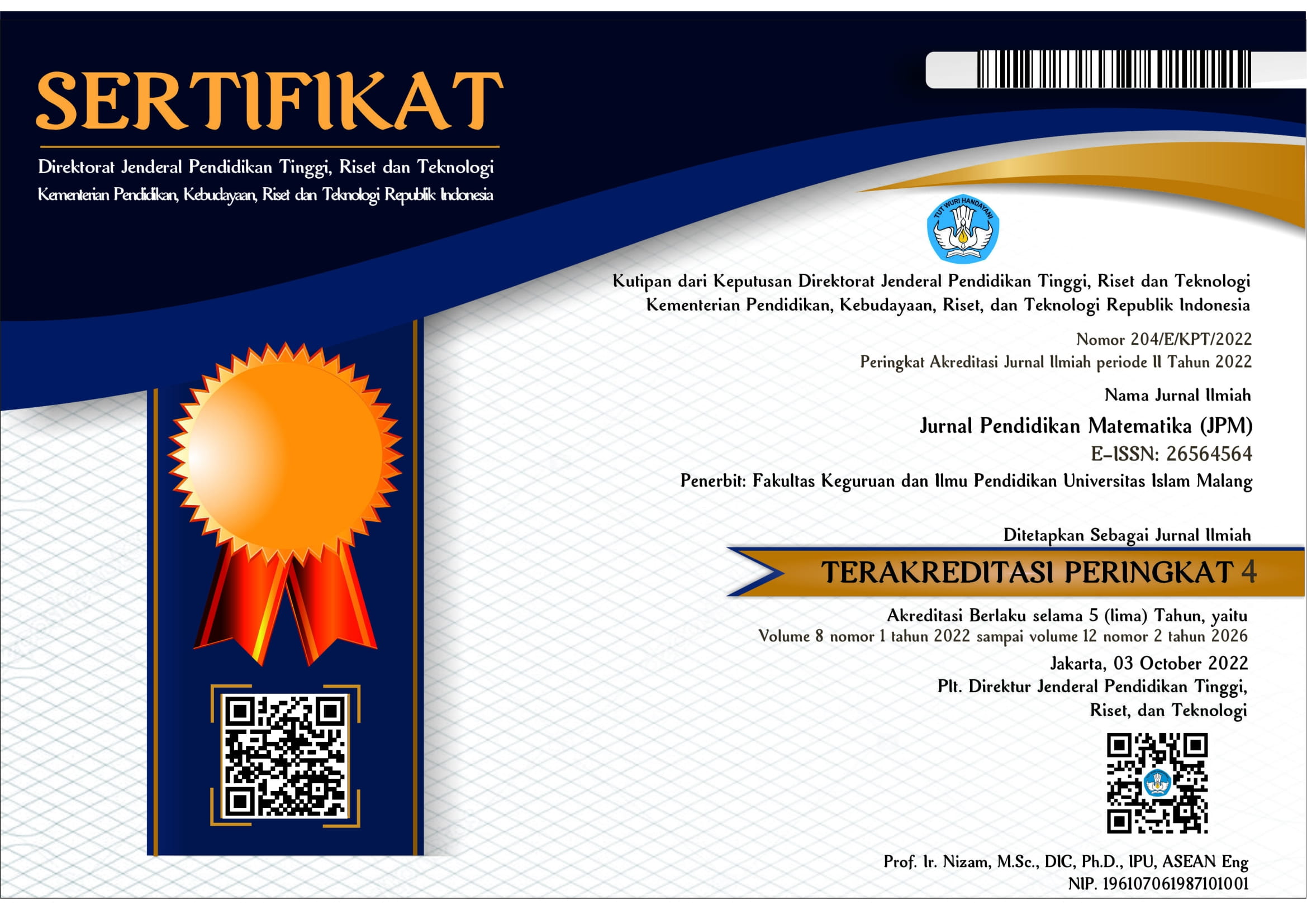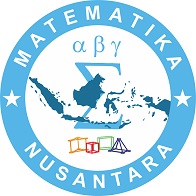TEACHER AS A FACILITATOR OR A TEACHER: EMPOWERING LEARNING STRATEGIES IN GEOMETRY COURSE
DOI:
https://doi.org/10.33474/jpm.v1i2.721Keywords:
Teacher, learning strategies, and geometry courseAbstract
Teaching is the well known word for teachers. Teachers know the meaning of this word and know how to perform teaching. Sometimes they do not know the difference between teaching and facilitating in learning and it make a distance between the students and teachers. The purpose of this study are how learning geometry in mathematics education, Teacher Training and Education Faculty at the University of Muhammadiyah Purwokerto, Indonesia modify the class in geometry course interactively and can be easily understood by students. So, the researchers made the strategies in geometry course that is associated with the games. Games are one of strategy in class which is support for the student to understand the geometry with easily and make the class interactively.
References
Bobango, T. (1993). Geometry and Analytic Calculus. New York : Routledge
Baker, Scott and Gersten, Russell. (1998). Teal World Use of Scientific Concepts: Integrating Situated Cognition with Explicit Instruction. California: Exceptional Students Press
Balka,C. (1974). Affective Dimensions of Learning. South California: Thomson Wadsworth
Colburn, Alan. (2000). An Inquiry Geometry. Toronto: Science Scope
Davis, R. (1969). Students's Ideas in Science. United Kingdom: Open Press.
De Sonza, F.D. (1998). Development of Mathematical Communicaton in Problem Solving Groups by Language Minority Students. New York: Mc. Graw hill companies
Dolan, R.P., Goodman, J., & Strain-Seymour, E. (2012). Evaluation of a Game-Based Performance Task for Measuring Collaborative Problem Solving Skills. Paper presented at the annual meeting of the American Educational Research Association, Vancouver, BC, Canada
Egenfeldt-Nielsen, S. (2007). Third Generation Educational Use of Computer Games, Journal of Educational Multimedia and Hypermedia, 16(3), 263-281
Embretson, S.E. (1987). Improving the Measurement of Spatial Aptitude by Dynamic Testing. Intelligence 11(4), 333-358
Evan,G. I. (1964). A summary of a Study of Schooling: Some Finding and Hypotheses. Toronto: Phi Delta Kappan
Fleith, Denise de Sonza. (2000). Lecturer and Student Perceptions of Creativity in the Classroom Environment. New Jersey: Lawrence Erlbaum Associates, Publishers
Forsyth, D.R. & McMillan, J.H. (1991). What Teories of Motivation Say about Why Learners Learn. New Directions for Teaching and Learning. 45: 39-51
Gardner, H. (1991). Abschied vom IQ-Die Rahmentheorie der Vielfache Intelligenzen. Stuttgart, (Orig.: Frames of mind)
Getzels,G.,& Jackson,F.S. (1962). Teaching Science with Toys and Gaming. California: College Teaching Summer Press
Groff, J., Howells, C., & Cranmer, S. (2010). The Impact of Console Games in the Classroom: Evidence from schools in Scotland. UK: Futurelab
Hashimoto. (1997). Opening Assessment to Our Students Social Education. Alabama: The University of Alabama Press.
Haylock. (1984). Science Education. New York: Learning Express
Hays, R.T. (2005). The Effectiveness of Instructional Games: A Literature Review and Discussion. Orlando, FL: naval Air Warfare Center Training Division. Retrieved from http://www.dtic.mil/cgi-bin/GetRDoc?AD=ADA441935
Hennessdy, Beth A. (1997). Teaching for Creative Development: A Social-Psychological Approach. Needman Heights, MA: Allyn & Bacon.
Jensen,I. (1973). Character Countism. Washington: National Academy Press
Karen Zill is the former Manager of Educational Outreach at WETA, Washington, D.C. She is currently an independent consultant who writes educational materials, develops outreach campaigns, and conducts media literacy classes and workshops.
Ken Bain, What the Best College Teachers Do, Harvard University Press, 2004, pages 32-42.
Kiili, K. (2005). Educational Game Design: Experiental Gaming Model Revisited. Research Report 4. Tampere University of Technology. Retrieved from http://amc.pori.tut.fi/publications/EducationalGameDesign.pdf
Kohler, L. (1997). How to make hands-on science work for you. New York: Eric Clearinghouse on Information and Technology
Linda Nilson, Teaching At Its Best: A Research-Based Resource for College Instructors, 2nd edition, Anker Publishing, 2003, pages 41-44.
Malone, T.W. (1981). Toward a Theory of Instrinsically Motivating Instruction. Cognitive Science, 5(4), 333-369
Matt DeLong and Dale Winter, Learning to Teaching and Teaching to Learn Mathematics: Resources for Professional Development, Mathematical Association of America, 2002, pages 159-168.
McFarlane, A., Sparrowhawk, A., & Heald, Y. (2002). Report on the Educational use of Games: An Exploration by TEEM of the Contribution which Games Can Make to the Education Process. Cambridgeshire, UK
Paulsen, M.B., & Feldman, K.A. (1999). Student Motivation and Epistemological Beliefs. New Directions for Teaching and Learning. 78: 17-25
Ross, Michael Elsohn. (2000). Science Their Way. Young Students, pp 63.
Singh,Y.E. (1988). School Science in Gaming. London and New York: The Penguin Group
Sloan, Megan. (1996). I love Geometry. California: College Express Group
Sheeffield,et.al. (1995). First- and Second-Grade Students Communication in Mathematics. Teaching Students Mathematics. Toronto: Thomson Wadsworth
Stenberg & Lubart, (1995). Using Think Time and Wait Time Skillfully in the Classroom. Texas: ERIC Digest
Tall, D.O. (1977). Conflicts and Catastrophes in the Learning of Mathematics, Mathematical Education for teaching, 24, 2 – 18
Tayman, Juliann M. and Thompson, Kathleen Lewis. (1996). Taking the Chaos out of Cooperative Learning: the 3 most Important Components. New Jersey: The Clearing House Company in Press
Thurstone, L.L. (1950). Some Primary Abilities in Visual Thinking. Psychometric Laboratory Research report no. 59, Chicago: University of Chicago Press
Widjaja, Y.B. (2002). How Realistic Approach and Gaming Based Lesson Work in Indonesian Secondary School Classroom [On-line]. Unpublished master’s thesis, University of Amsterdam, the Netherlands. Available: http://www.science.uva.nl/research/math/examen/2002/widjaja.pdf.





_-_Copy.jpg)
.jpg)
.jpg)










